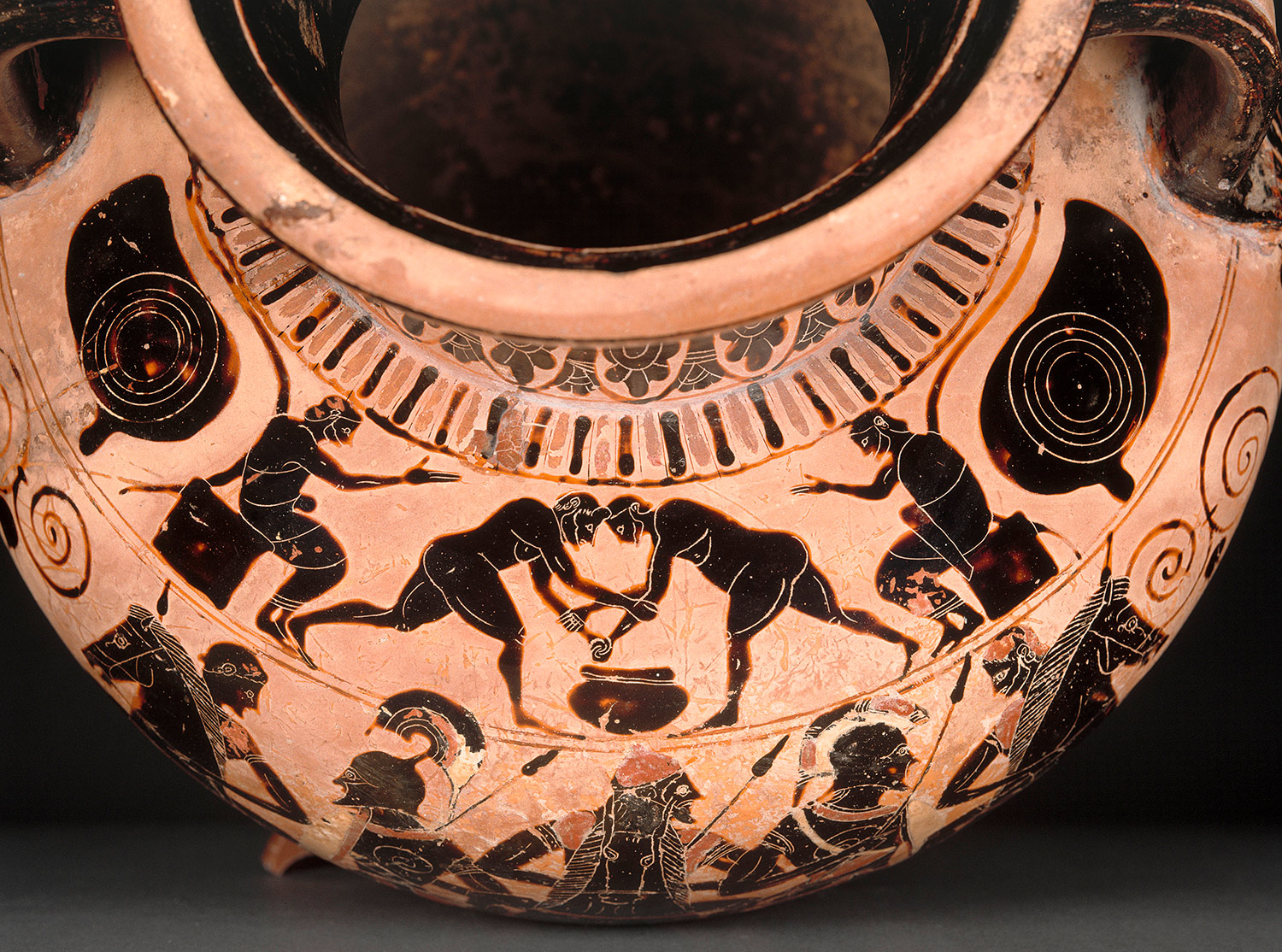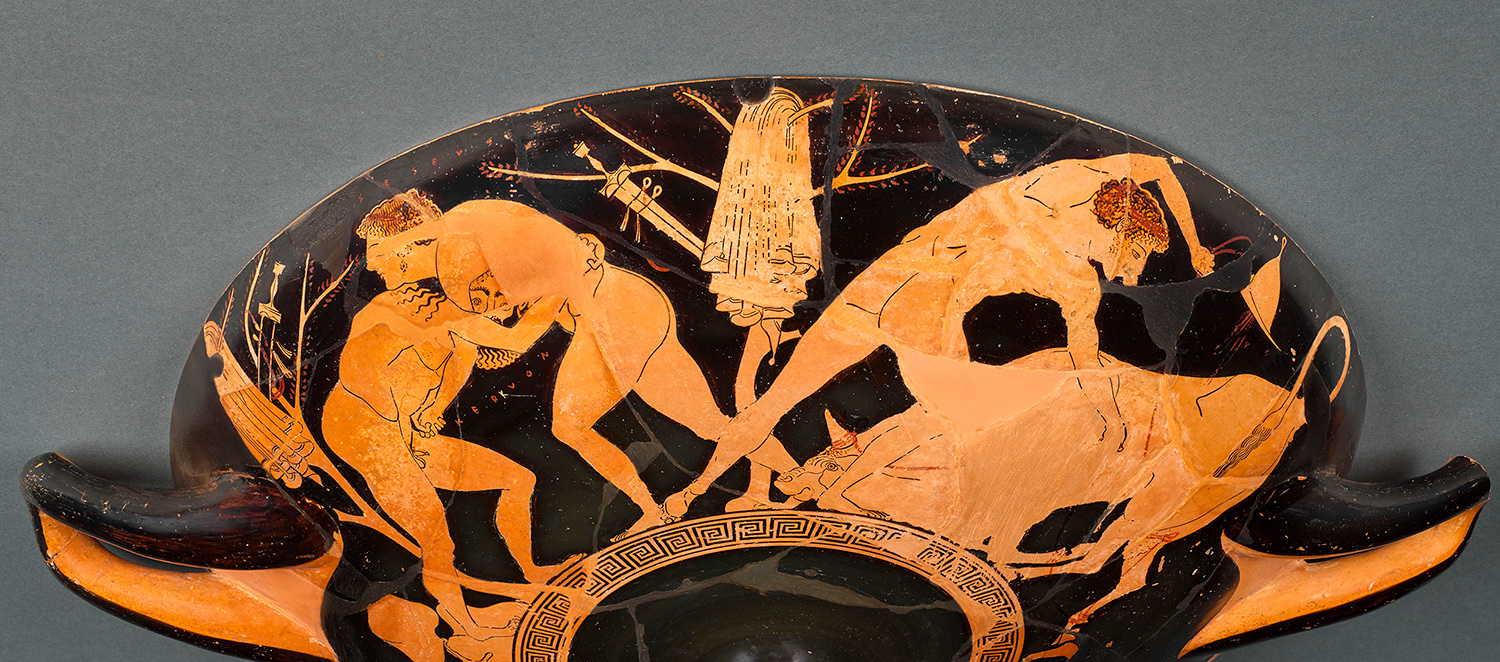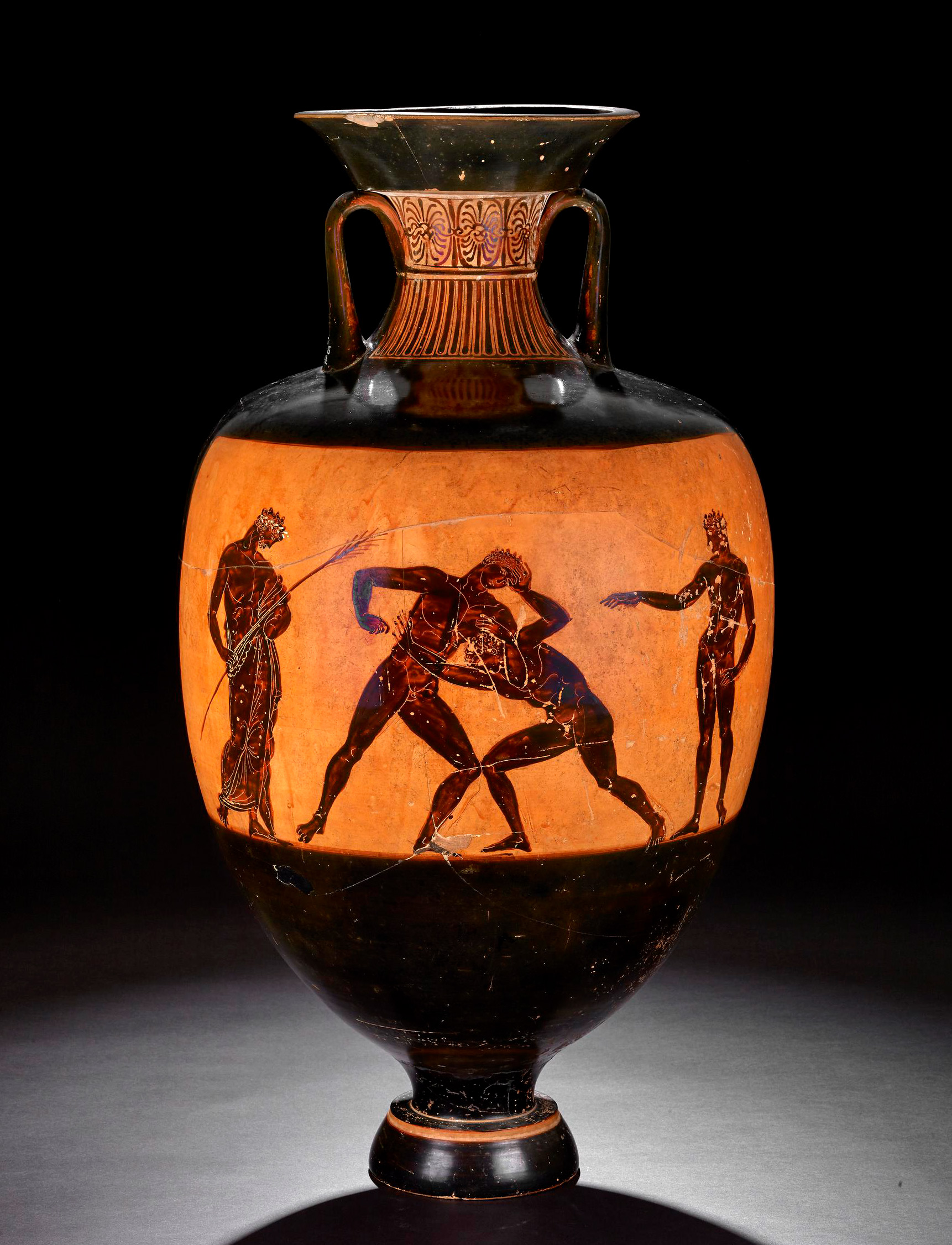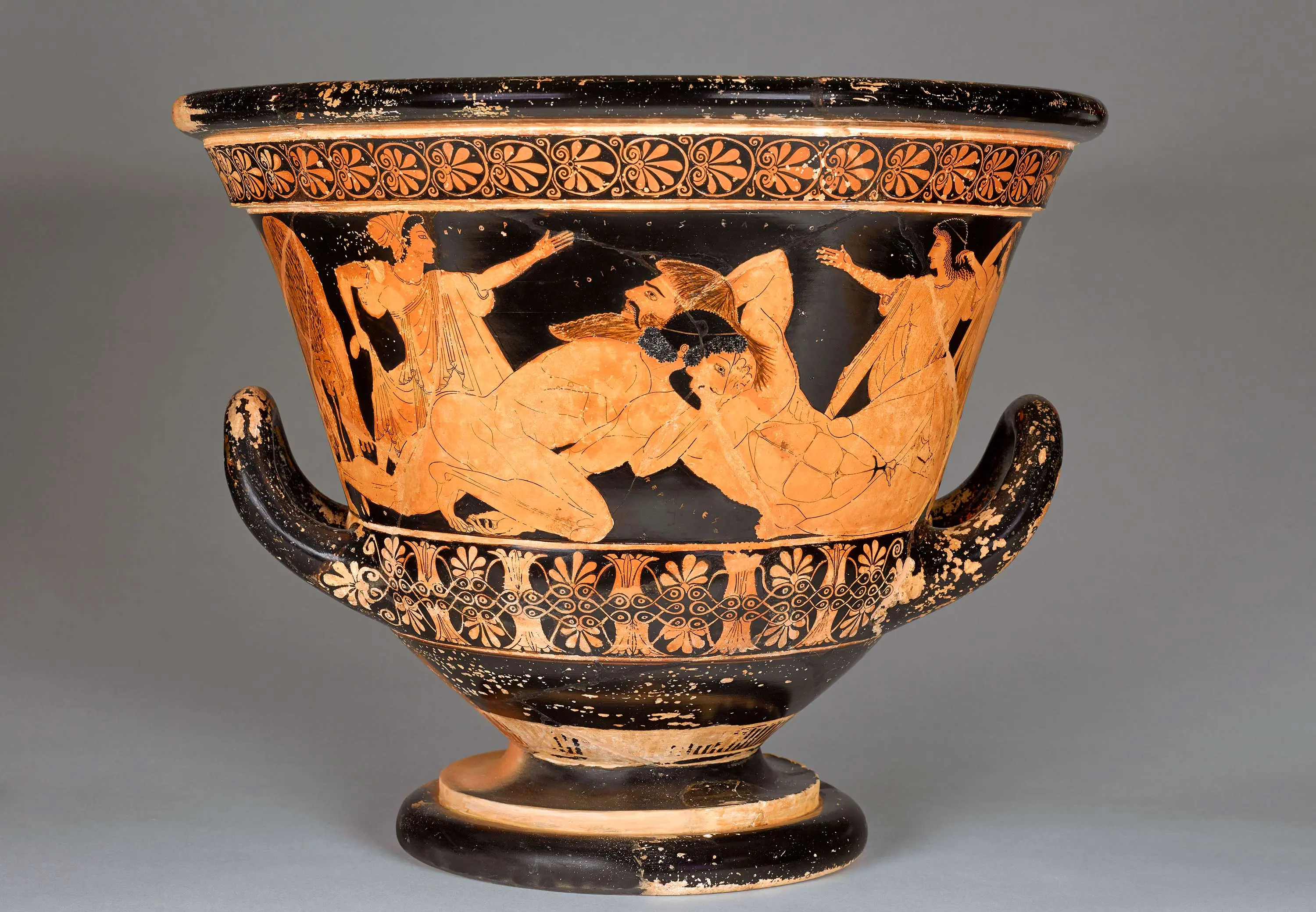
L’Olympisme
24 avril – 16 septembre 2024
Au cœur d’une lutte sans merciSigné par Euphronios, peintre,
Cratère en calice attique à figures rouges : lutte d’Héraklès et Antée
Vers 515-510 avant J.-C.
Paris, musée du Louvre, département des Antiquités grecques, étrusques et romaines, G103
Ce cratère à figures rouges peint par Euphronios, l'un des maîtres de cette technique, représente la lutte entre Héraclès et le géant Antée, fils de Poséidon et de la Terre. La lutte était inégale, car le géant régénérait ses forces en touchant le sol et massacrait tout nouveau venu sur son territoire. Et pourtant, le vainqueur du combat est bien Héraclès.
La victoire de l’hellénisme sur la violence barbare
Le héros grec n’a plus besoin de soulever le géant pour éviter qu’il ne reprenne contact avec la terre. Son immense corps est déjà inerte, l’une de ses mains coincée sous le corps de son adversaire. Étranglé par le fils de Zeus et d’Alcmène, au sommet de la douleur, Antée est en train d’agoniser comme en témoignent ses yeux révulsés et sa bouche entrouverte découvrant ses dents. À l’inverse, le corps d’Héraklès reste ramassé, les muscles tendus et le dos recourbé par l’effort. Son visage reste calme et concentré, manifestant une parfaite maîtrise.
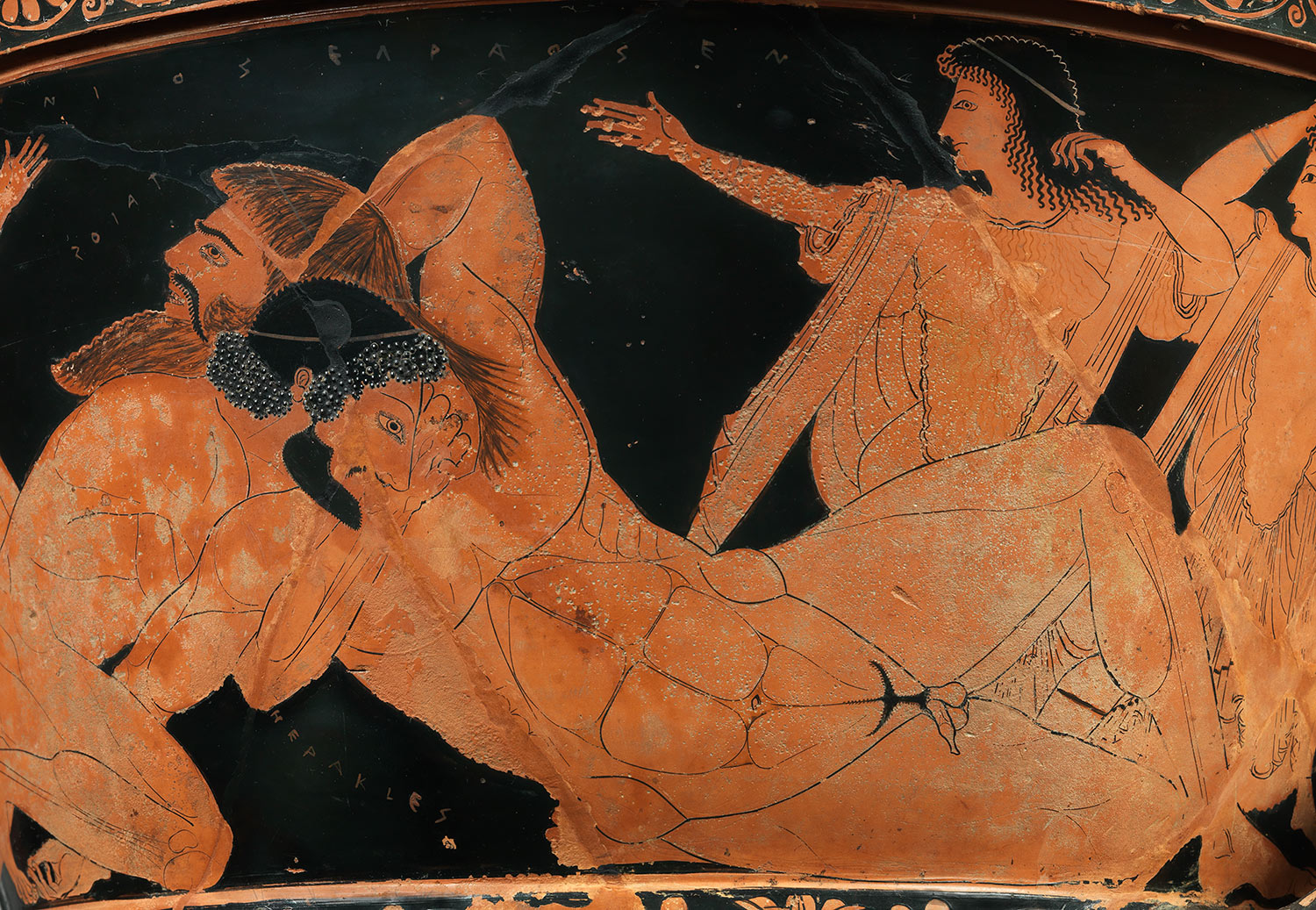
Un maître de la technique à figures rouges
La technique de la peinture à figures rouges permet à l’artiste des nuances qui servent son propos. La crème argileuse potassique utilisée se vitrifie et vire au noir durant la cuisson oxydo-réductrice : le noir est plus ou moins intense selon que le pinceau aura été plus ou moins chargé. La chevelure d’Héraclès d’un noir de jais présente des boucles figurées par l’application préalable d’un grènetis de boulettes d'argile. Celle d’Antée est rendue à grands traits de pinceaux moins chargés en couleur, qui lui donnent un aspect dru et étrange. Ainsi, la barbarie du géant contraste violemment avec l’hellénisme raffiné du créateur mythique des jeux Olympiques.

Une déclinaison philatélique pour les premiers Jeux
Cette scène fait partie des sujets choisis pour illustrer la lutte sur l’un des timbres commémoratifs qui furent tirés pour les jeux intermédiaires, appelés Mésolympiade, qui eurent lieu à Athènes en 1906. Ces tirages avaient pour but de financer les Jeux, tout en célébrant la richesse de la culture grecque. En raison de sa dextérité dans le domaine de la miniaturisation d’images, Gilliéron fut choisi pour dessiner les timbres en collaboration avec le numismate et archéologue Iôannis Svorônos qui sélectionnait les sujets. Le graveur français Louis-Eugène Mouchon, complétant l’équipe, prit en charge les tirages des Jeux de 1896 et de la Mésolympiade de 1906.

Sélection d'œuvres

Signé par Euphronios, peintre, Cratère en calice attique à figures rouges : lutte d’Héraklès et Antée. Vers 515-510 avant J.-C. Paris, musée du Louvre, département des Antiquités grecques, étrusques et romaines, G103
1 sur 5
